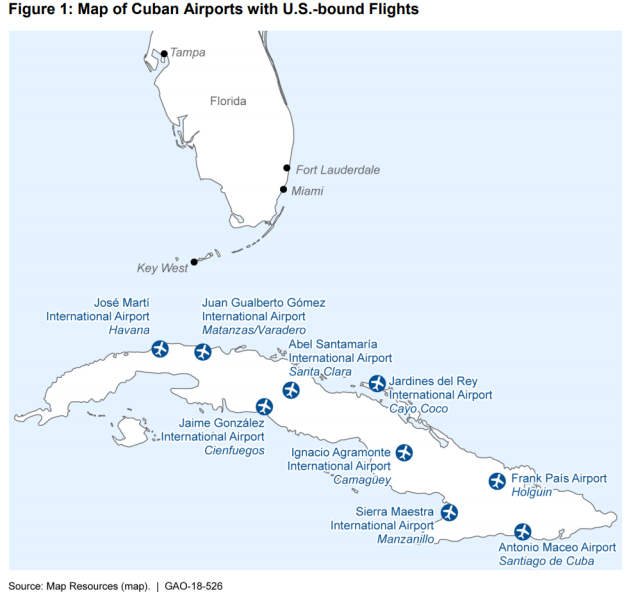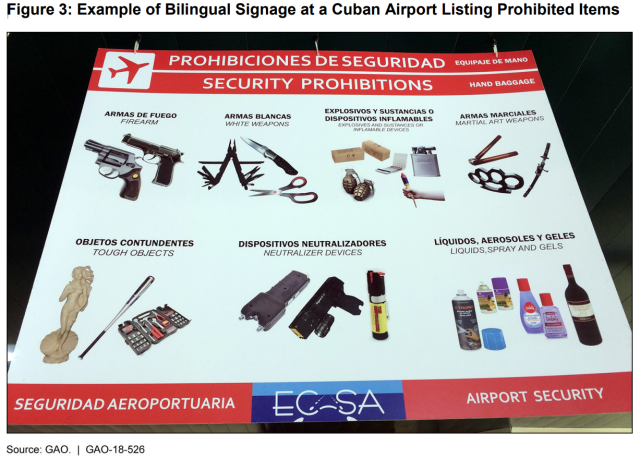How Is TSA Ensuring Flights from Cuba Are Secure?
 During these assessments and inspections, TSA looks at issues such as:
During these assessments and inspections, TSA looks at issues such as:
- who has access to secured areas of the airport and how that access is controlled,
- checked baggage screening,
- passenger screening, and
- whether the proper signs and notifications to travelers are displayed at the airport.
 TSA has a range of mechanisms available for addressing any deficiency it may find. For example, an inspector may recommend corrective actions for the airport operator or air carrier. TSA then follows up to see if the deficiency has been resolved.
TSA has a range of mechanisms available for addressing any deficiency it may find. For example, an inspector may recommend corrective actions for the airport operator or air carrier. TSA then follows up to see if the deficiency has been resolved.
 What has TSA found?
TSA found mixed levels of compliance with standards and recommended practices at Cuban airports during fiscal years 2012 through 2017. While several Cuban airports were fully compliant, others fell short on one or two of the standards and recommended practices. For example, inspectors found a perimeter fence that was in need of repair and another that was missing barbed wire.
TSA found that more than two-thirds of air carriers it inspected in fiscal years 2016 and 2017 had fully implemented all security requirements. In less than one-third of inspections, the carriers didn’t implement all of the requirements, including things like failing to notify passengers that their baggage is subject to search, as well as inadequate aircraft searches. In each of these cases air carriers took corrective actions.
To find out more, check out the full report.
What has TSA found?
TSA found mixed levels of compliance with standards and recommended practices at Cuban airports during fiscal years 2012 through 2017. While several Cuban airports were fully compliant, others fell short on one or two of the standards and recommended practices. For example, inspectors found a perimeter fence that was in need of repair and another that was missing barbed wire.
TSA found that more than two-thirds of air carriers it inspected in fiscal years 2016 and 2017 had fully implemented all security requirements. In less than one-third of inspections, the carriers didn’t implement all of the requirements, including things like failing to notify passengers that their baggage is subject to search, as well as inadequate aircraft searches. In each of these cases air carriers took corrective actions.
To find out more, check out the full report.
- Questions on the content of this post? Contact William Russell at RussellW@gao.gov.
- Comments on GAO’s WatchBlog? Contact blog@gao.gov.

GAO's mission is to provide Congress with fact-based, nonpartisan information that can help improve federal government performance and ensure accountability for the benefit of the American people. GAO launched its WatchBlog in January, 2014, as part of its continuing effort to reach its audiences—Congress and the American people—where they are currently looking for information.
The blog format allows GAO to provide a little more context about its work than it can offer on its other social media platforms. Posts will tie GAO work to current events and the news; show how GAO’s work is affecting agencies or legislation; highlight reports, testimonies, and issue areas where GAO does work; and provide information about GAO itself, among other things.
Please send any feedback on GAO's WatchBlog to blog@gao.gov.
